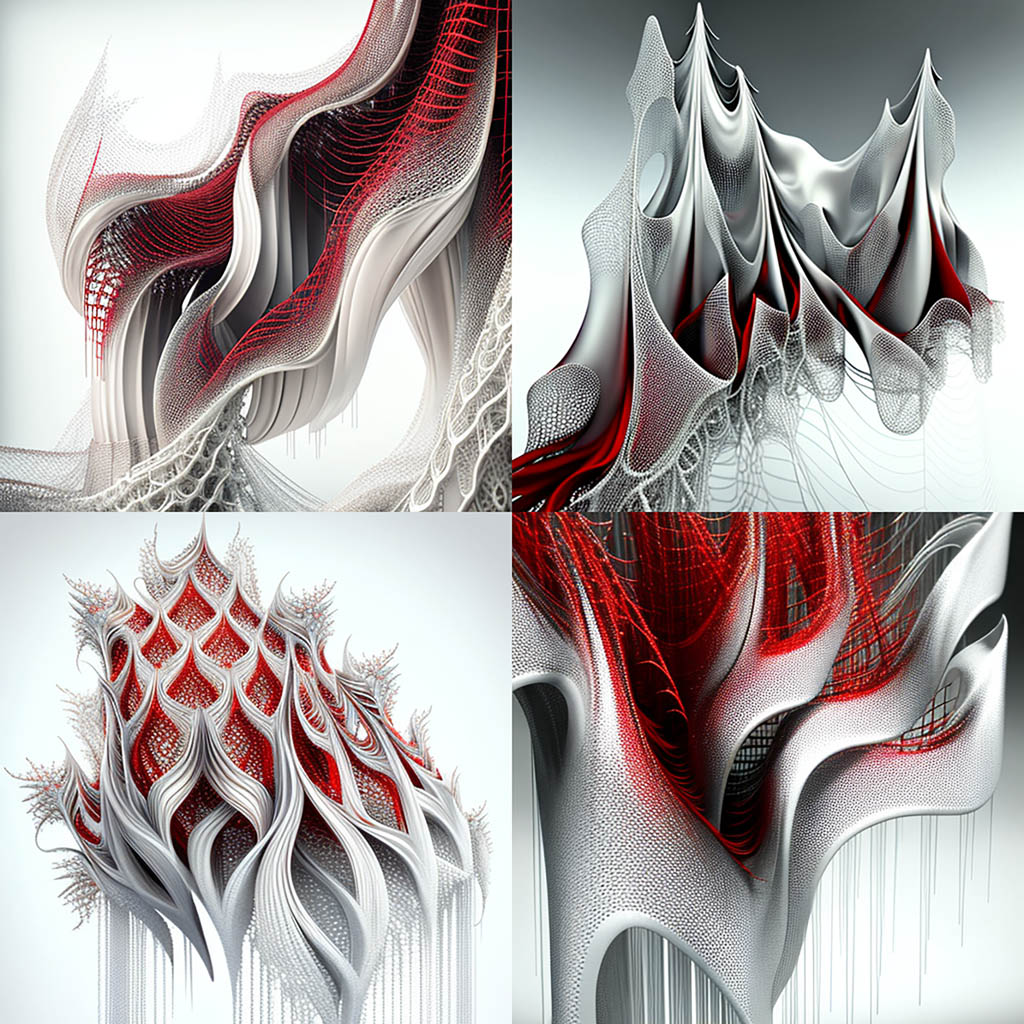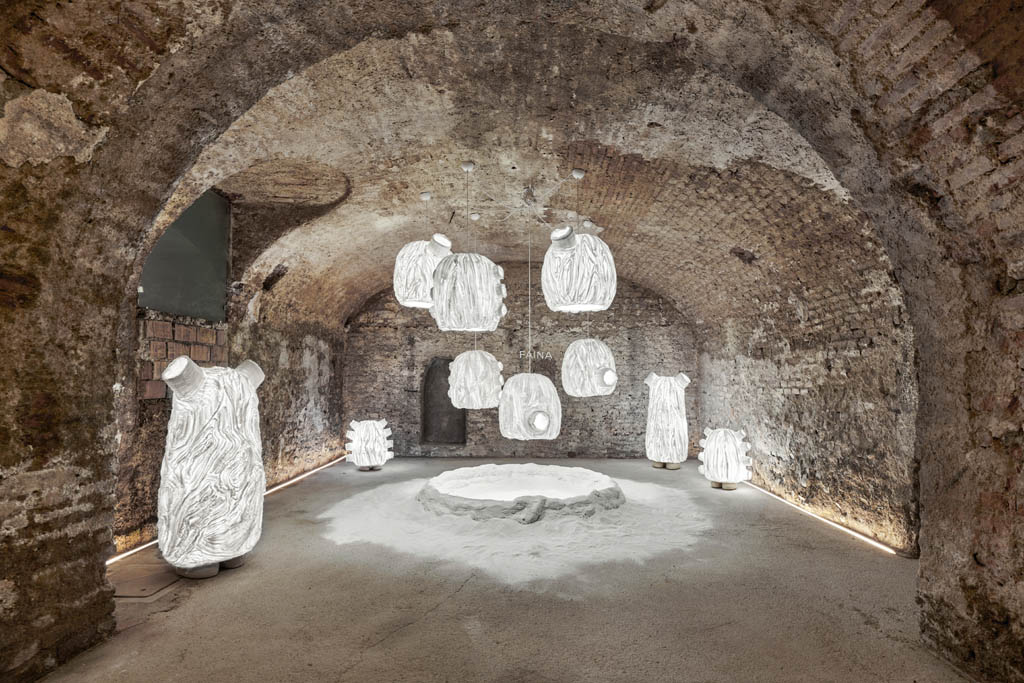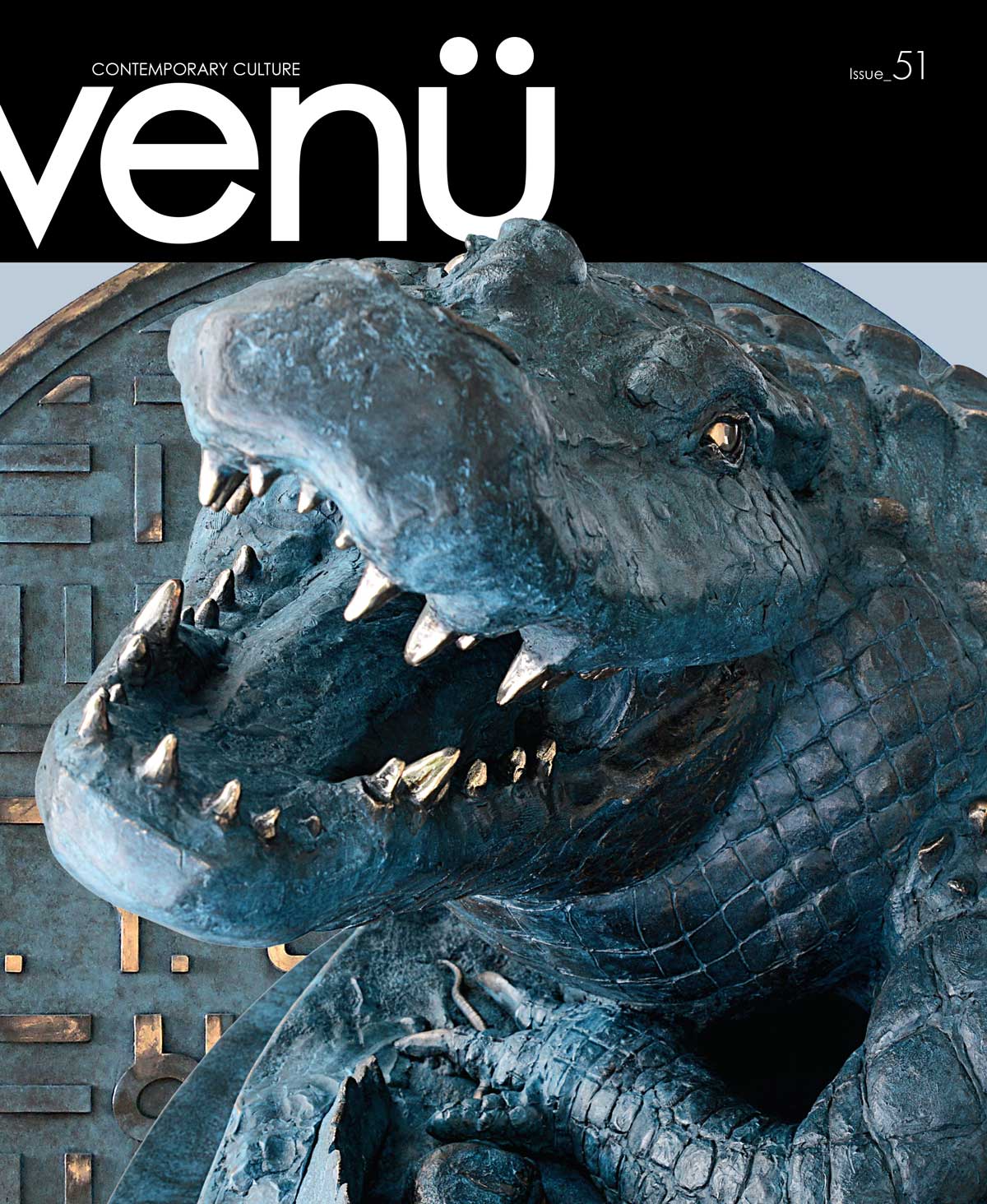
Based on the disciplines of textile manipulation and material interpolation, Florentine-trained artist, and designer Caterina Roppo’s process of constructing new shapes from Jacquard filaments is a tapestry of structural temperaments that collide between the realistic and virtual space. Venü explores the aesthetic of her emotional veracity and dimensional perception in projects: Trayma & Digital.
VENÜ: In each of the works of Trayma, can you refer to what distress or emotion you were feeling at the time? Some pieces look more distressed than others, while others feel like you were peeling back the layers of anxiety, trepidation, and grief.
CR: The project’s intention started from my intimate thoughts to communicate my world to the user; those who observe the works connect with a landscape, an emotion, and the three-dimensionality of a thought. The different analog series have been designed to go through the awakening phases in a circular rather than linear time so that whoever looks at the work can go through the penetration of the journey with their own acumen that leads to the point of connection and ultimately their own feelings. The titles of the analog works express the passages I went through to arrive at my own self-discovery.
“Going through fear, pain, and loss through the action of awakening is an act that can change perception: without present, without past, only future.”
– Caterina Roppo.
VENÜ: Can you describe the process of how you work with materials. Is it more of a tactile response or do you connect with them on a deeper level?
CR: My work starts from a profound movement linked to my conscious and subconscious and moves on to elaborating a natural and unnatural material. My experimentation faces various challenges, the interpretation of three-dimensional space, the suspension of it, as well as the challenge of pictorial experimentation in the womb of the fabric.
VENÜ: What kind of materials were you using through your digital works? Were they done using a 3D printer?
CR: My work is composed of the digital and analog series, both equally significant to me; the digital part currently lives in the digital hemisphere, and the analog part lives through the tissue media combined with the paint bleeding. No 3D printer was used to make any of the series; the 3D effect is achieved with a technique of pulling the yarn through the weave of the fabric, which reacts to heat.
VENÜ: Are your digital works also based upon a traumatic experience, or were you inspired by the fenestration of the materials to evoke a visceral response?
CR: The digital series is part of Trayma’s story, exactly like the analog series, dealing with the experience of trauma in emotional awakening through immersion. Artificial intelligence allowed me to enter a visceral analysis through an intimate and profound dialogue.
VENÜ: Once your works are completed, do you see them as a distant memory of what you went through, or are they a reminder of your journey and progress?
CR: In the relationship with my works, I feel an indelible red thread, which sees them always connected with me but free to travel the world. Their strength and power are to free other people from the weight of inner wounds, as happened to me. I have a strong protective instinct, which sees each work accompanied by a completely different twin, but for me, this bond is free, without limits of space or time.
TRAYMA
Critical Text by Curator Michele Spinelli
The Greek word “trayma” means a puncture, a piercing, a wound; it is used to signify a tear in the tissue of the human body, a laceration that distorts the body. Artist and designer Caterina Roppo finds inspiration in this by using fabric, interpreting it as a body in which its weave becomes an epidermis.
“Trayma” takes on different meanings and Roppo, with her visual art project, is driven to approach it as a wound that cuts off the flow of her existence, thereby altering it. The substance of the trauma is not the pain itself, but the feeling of helplessness that engenders a dominant concern: the uncertainty of overcoming it. Thus, the artist explores ways to come to terms with grief and how to reach peace – and reconciliation – with those places that have caused this emotion.
Pain, as the artist states quite succinctly, “is the haven of insight into one’s own soul”, hence the process of healing begins through an image and the creative journey becomes an aesthetic reconciliation. This work has two distinct souls: one modern and public, the other ancient and familiar.
By capturing the aesthetics, starting with the image, from the recollection and understanding of pain through matter, the work is approached through textiles, an organic material that is part of nature and symbolically, like stone, inorganic and imperfect, it is a wound on a monolith frame: over time the wound scars its surface and yet it always remains solid. On observing “Trayma”, it is easier to ask the question raised by Wolfram Eilenberger in his short philosophical handbook: (¿Sufren las piedras?) “Can stones suffer?”
“To conceive that the scar is the point where the light enters me, I have crossed many places, which live in different dimensions of space and time: Human, emotional, sensitive, and sometimes terrifying dimensions. With Trayma, I finally accept that light is not a stable condition, but in motion.”
– Caterina Roppo.
Stone has been the preferred material of early architecture since prehistoric megalithic constructions, such as dolmens and menhirs, dating back to the 3rd millennium B.C., ever present in the memory of all the artist’s fellow citizens. Italian heritage in this case is construed as a collective memory as well as cultural heritage. The works of art that make up the collection are a succession of awe-inspiring signs, lights, and volumes. The workmanship involved in the creative process combines different techniques to achieve the three-dimensionality of natural fabrics. The emblematic feature of this collection is the filament-like effect of exquisite fabrics. A type of workmanship – “flotté” – leaves these filaments loose, adding an all-organic appearance to this inspired idea of using viscose and rayon with complex Jacquard patterns.
The fabric designs are by no means accidental and are a faithful transcription of images that have influenced the artist in various specific places. The natural and otherworldly element linked to a place, the “genius loci” or its guardian spirit, acquires its most ancient meaning. By identifying the concept of the “inner essence” of a place, which we can, very simply, define as its spirit and the protective deity of every place, is used by the artist to seek out imperfections, the exfoliation of plaster on stone, and are the main source of a new-found beauty. ☐
Bartolomeo Sastre @bartomeusastre
Matteo de Nando @_rn8p_
Alessio Anastasi @livido_altrove





Leave a Reply